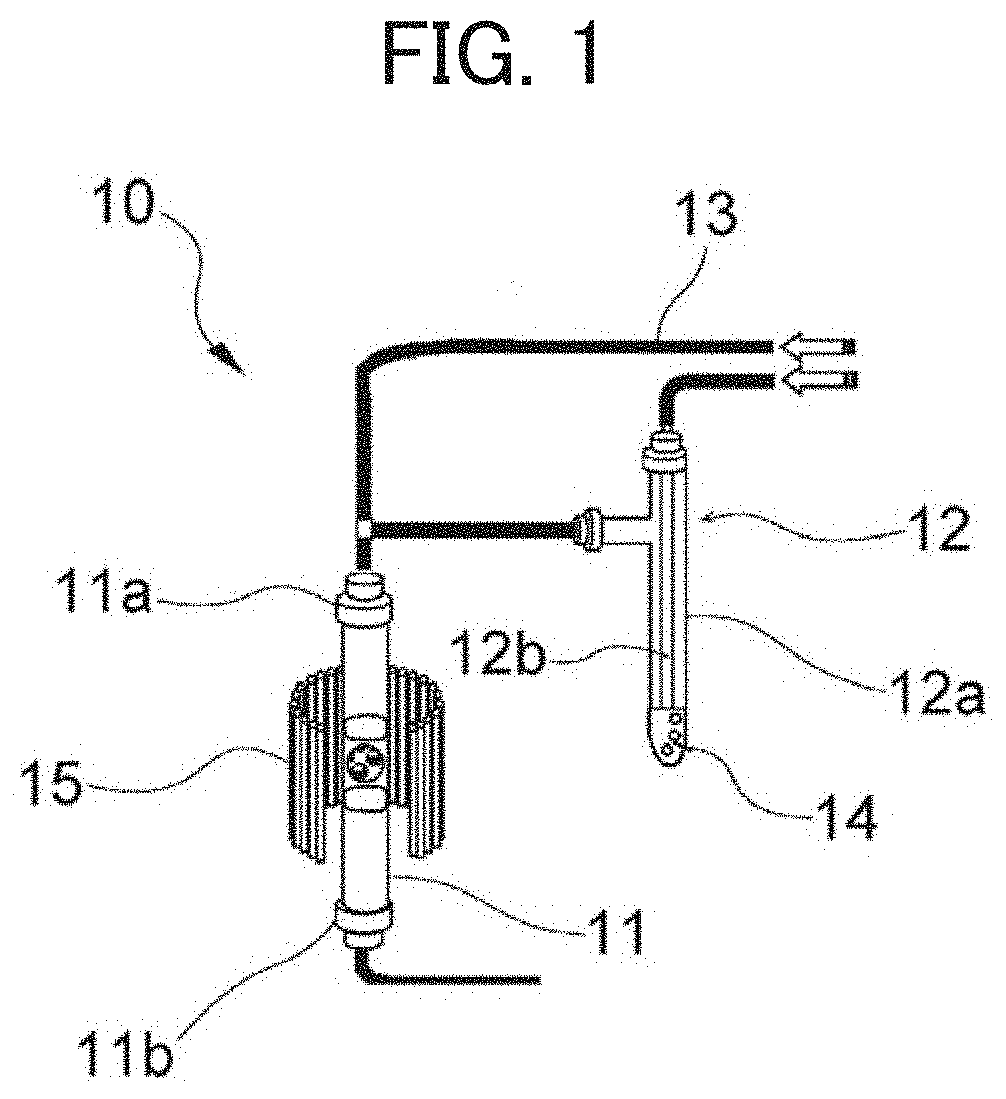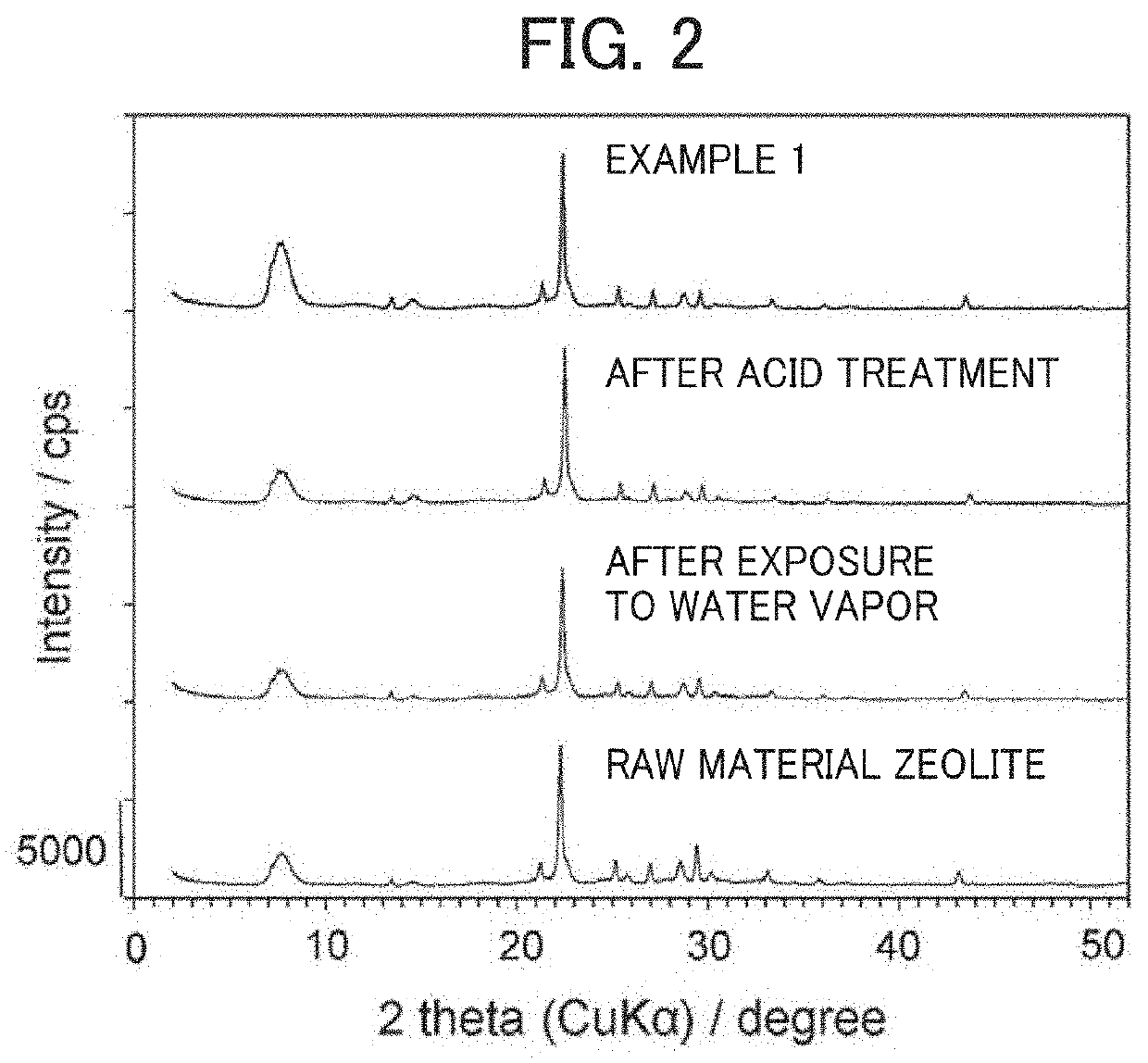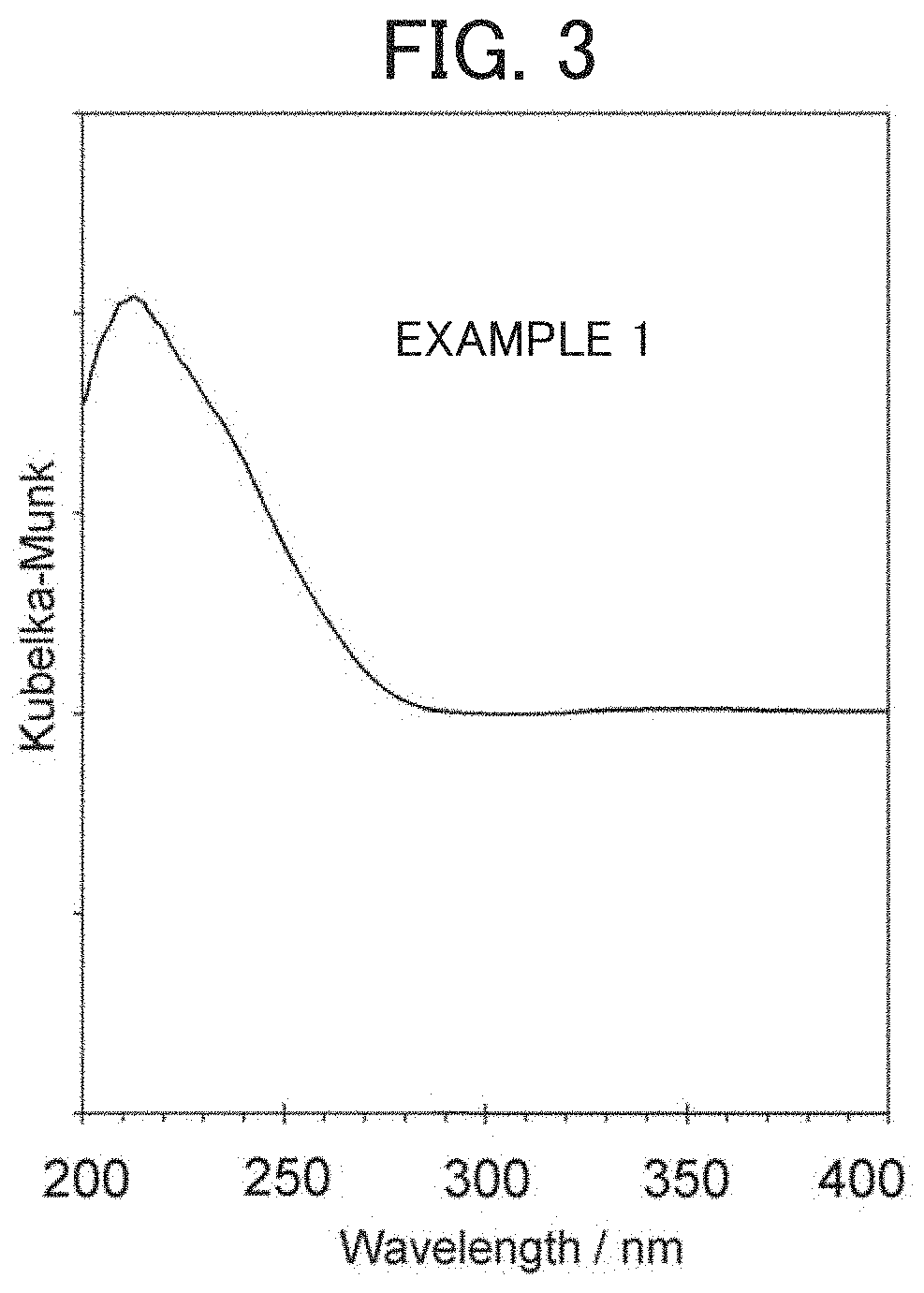Beta zeolite, method for producing same, and catalyst
- Summary
- Abstract
- Description
- Claims
- Application Information
AI Technical Summary
Benefits of technology
Problems solved by technology
Method used
Image
Examples
preparation example 1
(1) Synthesis of Seed Crystals
[0063]According to a conventionally known method, tetraethylammonium hydroxide as an organic SDA, sodium aluminate as an alumina source, and silica fine powder (Mizukasil P707) as a silica source were heated with stirring at 165° C. for 96 hours to form a beta zeolite with a SiO2 / Al2O3 molar ratio of 24.0. In an electric oven through which air was circulated, the product was fired at 550° C. for 10 hours to form organic-free crystals. As a result of observation with a scanning electron microscope, the crystals had a mean particle size of 280 nm. The resulting organic-free beta zeolite crystals were used as seed crystals.
(2) Synthesis of OSDA-Free Beta Zeolite
[0064]In 13.9 g of pure water were dissolved 0.235 g of sodium aluminate and 1.828 g of 36% sodium hydroxide to form an aqueous solution. A mixture of 2.024 g of silica fine powder (Cab-O-sil, M-5) and 0.202 g of the seed crystals was added little by little to the aqueous solution and stirred to for...
example 1
(1) Ion Exchange Treatment
[0065]The OSDA-free beta zeolite obtained in Preparation Example 1 was used as a raw material and dispersed in an aqueous solution of 0.499 mol / L ammonium nitrate. The mass ratio between the OSDA-free beta zeolite, ammonium nitrate, and water was 1:2:50. While heated at 80° C., the dispersion was allowed to stand for 24 hours so that it underwent ion exchange. Filtration was then performed to separate the beta zeolite. The ion exchange-filtration process was performed once again and followed by washing with water and drying at 80° C., so that an ammonium-type beta zeolite was obtained. Composition analysis showed that it had a Si / Al molar ratio of 6.0.
(2) Exposure to Water Vapor
[0066]The ammonium-type beta zeolite was charged into the apparatus shown in FIG. 1. The amount of the charged material was 1 g. As shown in FIG. 1, a mixed gas of argon and water vapor was continuously allowed to flow through for 24 hours with heating at 500° C. by the heater 15. Th...
example 2
[0075]A Ti-containing beta zeolite of Example 2 was obtained similarly to Example 1 except that, in the step (4) of introducing Ti, the beta zeolite obtained in the step (3) was used in an amount of 504 mg instead of 300 mg in Example 1. Composition analysis showed that the Ti-containing beta zeolite of Example 2 had a Ti content of 0.272 mmol / g, a Si / Al molar ratio of at least 1,000, and a Si / Ti molar ratio of 59.9.
PUM
| Property | Measurement | Unit |
|---|---|---|
| Molality | aaaaa | aaaaa |
| Fraction | aaaaa | aaaaa |
| Fraction | aaaaa | aaaaa |
Abstract
Description
Claims
Application Information
 Login to view more
Login to view more - R&D Engineer
- R&D Manager
- IP Professional
- Industry Leading Data Capabilities
- Powerful AI technology
- Patent DNA Extraction
Browse by: Latest US Patents, China's latest patents, Technical Efficacy Thesaurus, Application Domain, Technology Topic.
© 2024 PatSnap. All rights reserved.Legal|Privacy policy|Modern Slavery Act Transparency Statement|Sitemap



